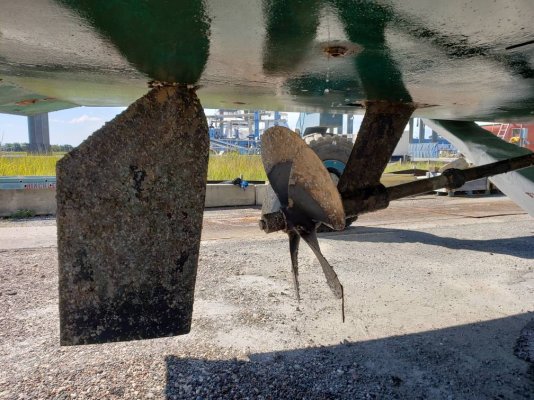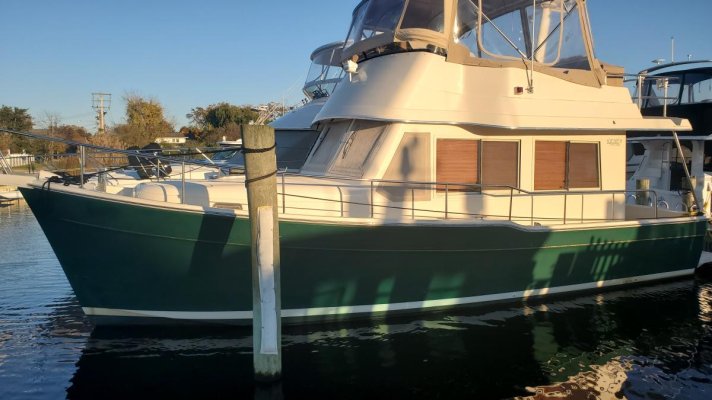jefndeb
Guru
Hello,
Our mainship 40 single has shown that it really doesn't want to maneuver all that well while reversing. I understand that reversing is a very different animal as far as physics is concerned, no water being forced over the rudder, size of the rudder and the fact that the stern is basically square and naturally doesn't help as a bow does.
I was just wondering if my idea of backing is close..
We have bow and stern thrusters so was wondering if setting up for a reversing turn to port might be like this..
With boat pretty much stopped, turn the rudder to port about 3/4, set motor into reverse idle, bump stern thruster to port, bump bow thruster to starboard and then bump throttle a little to try to get some water flowing over the rudder.
Wind and tide considered of course.
Does this sound close?
My rudder is really small which surely doesn't help.....
Thanks for your comments...
Our mainship 40 single has shown that it really doesn't want to maneuver all that well while reversing. I understand that reversing is a very different animal as far as physics is concerned, no water being forced over the rudder, size of the rudder and the fact that the stern is basically square and naturally doesn't help as a bow does.
I was just wondering if my idea of backing is close..
We have bow and stern thrusters so was wondering if setting up for a reversing turn to port might be like this..
With boat pretty much stopped, turn the rudder to port about 3/4, set motor into reverse idle, bump stern thruster to port, bump bow thruster to starboard and then bump throttle a little to try to get some water flowing over the rudder.
Wind and tide considered of course.
Does this sound close?
My rudder is really small which surely doesn't help.....
Thanks for your comments...



